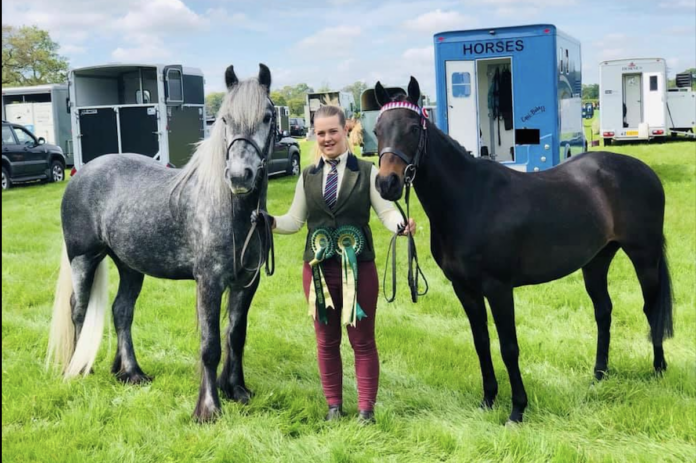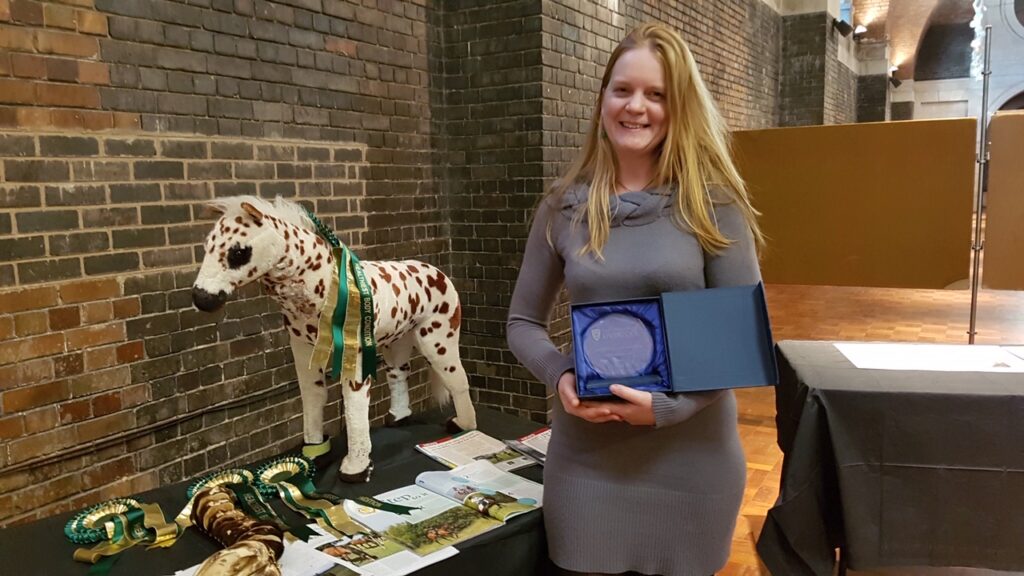
Manufacturers and academics develop imaginative ways to educate horse owners.
The problem of overweight equines – and related health problems – isn’t going away.
Between 31 and 54% of the UK’s equines are obese, according to the British Equine Veterinary Association (BEVA),
The equestrian industry is working hard to address the issue.
Feed manufacturers have created innovative ‘lite’ products and offer free advice via helplines. Various ‘slow’ feeders have been developed. The equestrian media continues to caution owners about the perils of equine obesity.
But still the blight persists, compounded by what many amateur owners consider to be a ‘normal’ condition for horses.

Weigh In Wednesday
Dodson & Horrell is helping owners keep an eye on their horses’ or ponies’ weight by encouraging the use of weigh tapes and body condition scoring.
A free chart can be downloaded at https://bit.ly/DHWeighInWednesday and filled in each month to track progress. There are also hints and tips, including how to body condition score.
On the first Wednesday of every month, D&H is reminding owners to ‘weigh in’ their horse and record the details on their weight chart.
Stockists can get involved with Weigh In Wednesday by sharing D&H’s social media posts and using the assets in its online Trade Portal (www.dodsonandhorrell.com/trade-area).
“We all know that when horses carry too much weight, it can lead to a number of health issues, not least laminitis, EMS (equine metabolic syndrome) and arthritis,” says D&H marketing manager Lucy Scott.
Spot the overweight horse
Spillers is helping horse owners ‘get their eye in’ on body condition scoring with an online test to see who can spot an overweight equine.
“These days, when we’re exposed to so many images of horses and ponies on social media, it’s good to know if you can spot an overweight horse from a photo alone,” said Clare Barfoot, marketing and research and development director at Mars Horsecare UK, home of the Spillers brand.
“With so many horses and ponies in the UK carrying a few extra pounds, the question is - have we normalised overweight horses?” she added.
“We’ve designed our test to help you assess your ability to spot an overweight horse and ‘get your eye in’ on what constitutes a healthy weight.”
Take the test here.
Campaign targets show horses and ponies
The theme of overweight horses being normalised – or even applauded – is the basis for a campaign to persuade show producers and riders to think again about their animals’ condition.
Dr Tamzin Furtado, a behaviour-change scientist from Liverpool University, and The Horse Trust are rewarding healthy body condition in show horses and offering advice at shows across the UK.

The programme, piloted in 2019 but disrupted by Covid, uses vets to score horses in certain classes and award rosettes for the healthiest body condition.
Among the participating shows are Bucks County, Great Yorkshire and this week’s Royal International.
“Horses who are overweight or cresty are often celebrated for their condition – and we want to slightly challenge that, by celebrating horses in ideal body condition,” says Tamzim Furtado.
“It’s not about being critical of or challenging the judges, just showcasing what ideal body condition looks like,” added vet and programme judge Ben Curnow.
“We get very upset by seeing photos of underweight horses in the media, but in reality, far more horses are obese than are underweight,” says Jan Rogers of The Horse Trust.
“This is very worrying for vets who are finding that they have to treat these horses with serious health conditions like equine metabolic syndrome and laminitis.
“Peoples’ perceptions of what is a healthy weight have shifted towards the higher body condition scores. We would like to help to reset this balance.”
It’s hoped the educational programme will continue into 2022.
















